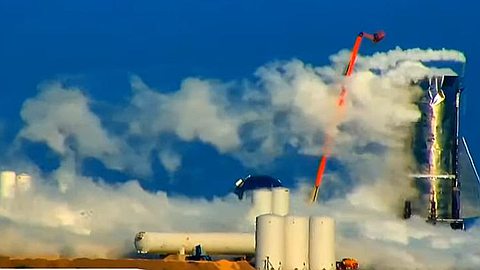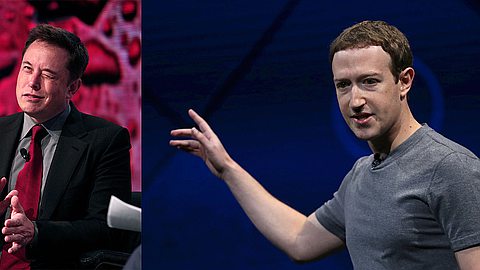Tesla’s Highly Anticipated Model 3 Just Entered ‘Production Hell’

Electric car company Tesla, and its billionaire entrepreneurial leader Elon Musk, know how to dazzle an audience.
At the back of Tesla’s Fremont, Calif. factory last Friday night -- surrounded by thousands of Tesla employees and under the spotlight of cameras and a video live stream -- Musk showed off the first thirty of the company’s new Model 3 electric cars, awaiting pick up by customers, including many employees.
It's a car intended for a more mainstream customer with a base price of $35,000, and it represents a major bet by the fourteen-year-old Tesla. Musk has spent over a decade envisioning this car as the key to his “master plan” to make electric cars both affordable and thrilling, and an estimated 500,000 customers have already made reservations for the cars.
But it won’t be the fawning press coverage, with many already comparing the launch of the Model 3 to the launch of the iPhone, that will determine if the rollout of the Model 3 will be a success. It will be the employees.
Tesla now has over 30,000 of them, including many thousands that will be working long hours in the Fremont factory trying to ramp up production of the Model 3. And more thousands in the Gigafactory outside of Reno, Nevada, figuring out how to crank out large volumes of new batteries that will power the long-range electric vehicle.
These employees, under the leadership of Musk and his executive team, will be responsible for growing production of the Model 3 from the first 30 cars shown off this weekend, to 5,000 cars per week at some point later this year and 10,000 at some point in 2018.
It’s a jaw-dropping ramp up, and far more aggressive than any other automaker would dare to attempt in such a short time frame. It might even be impossible. By 2018, Tesla says it will make 500,000 cars a year, up from the almost 80,000 it made last year.
Musk knows the risks well. He’s now well-versed in car manufacturing hurdles and potential delays thanks to the company’s history of making cars from the first Lotus-based Roadsters, to the much-lauded Model S, to the production-line-plagued Model X.
“Welcome to production hell,” Musk said, chuckling, to the audience of engineers, designers and factory line workers amassed on Friday night at the back of the factory. “It’s going to be where we are for at least six months, maybe longer. But you guys know this you’re veterans. You’ve been through this,” Musk said.
Long time Tesla workers definitely have. The Model S had its share of production bugs through its manufacturing ramp in 2013, which at one point contributed to Musk reportedly considering to sell a cash-strapped Tesla to Google.
Musk has been very open about the early production issues associated with the Model X, including difficulties with funky non-closing doors and problems with seats. He has said many times that the company showed “hubris” in over-engineering the Model X and making it so difficult to manufacture.
Even today, Tesla’s deliveries of its Model S and Model X cars tend to be at the lower end of the company’s predictions. Earlier this month, Tesla said it delivered 22,000 of its electric cars in the second quarter of 2017, down from the over 25,000 it shipped in the first quarter of this year.
Tesla delivered 47,100 cars in the first half of this year, but because the ramp of the Model 3 could be so unpredictable, the company is avoiding giving guidance for car shipments for the second half of the year. During Friday’s event, Musk showed off an image of a Model 3 production curve graph containing little to no real metrics.
The difficulties partly stem from the high number of parts that the cars require from all over the world. The Model 3 has 10,000 unique components. If one supplier has a delay, it delays the entire car shipment.
Another issue is the advanced electric car engineering that Tesla is known for. Their car design (like with the Model X cars) is constantly pushing the envelope, but also adding more risk to the production process.
The unusual battery production for the Model 3 adds even more risks and potential delays to the process. The Gigafactory is producing a new type of larger form factor lithium-ion battery cell specifically for the Model 3 in conjunction with Panasonic.
Tesla confirmed that the first thirty Model 3 cars are indeed using these larger lithium-ion batteries made in the Gigafactory. But it’s unclear what scale the Gigafactory production is currently at or would need to be to reach the goal of 5,000 cars per week.
This time around Musk has seemingly taken the lessons of the Model S and X, and applied them to the design of the Model 3. It’s a much simpler, streamlined and slimmed down car, Musk and his team have said repeatedly.
“We engineered it [the Model 3] to be a lot easier to build,” said Musk at the Friday night party. We’ve got the part count down, made it light, and made it affordable, explained Musk during his presentation at the party.
It’s smart, and necessary, for Tesla to do everything it can to make its employees happy during this “production hell” crunch time. The car company, and Musk, is notorious for pushing its employees to the limits to reach audacious goals. Executive turnover at times has been high, and workers have reportedly suffered due to aggressive timelines.
That could be part of the motivation behind why the party on Friday night was so focused on the employees. Employee customers got the first cars and thousands of employees surrounded Musk on stage. Some new Tesla faces -- including Tesla designers, engineers and factory line workers -- were given the chance to address the audience.
Most of the time Musk, or one of a few Tesla C-level execs -- like CTO JB Straubel or Chief Designer Franz von Holzhausen -- do all of the public speaking. Friday’s party was also in contrast to the Model S customer hand-off event in 2012, which witnessed the first Model S cars mostly going to Tesla’s wealthy investors.
Some Tesla employees will likely buckle under the production hell pressure, although Musk himself is unusually committed to help in these hardcore situations. With the Model X, Musk famously slept in a sleepingbag on the production line of the factory until the manufacturing issues were worked out.
At the Friday night party, Musk again addressed his audience of employees with some potentially reassuring words: “I look forward to working alongside you through our journey through hell. As the saying goes, if you’re going through hell, keep going.”





